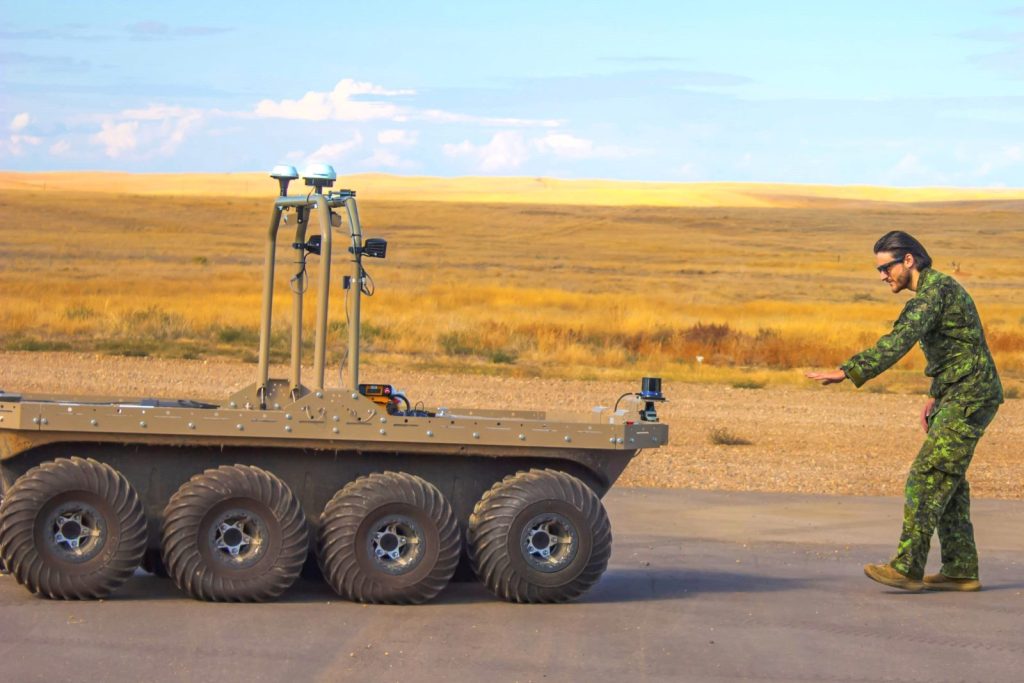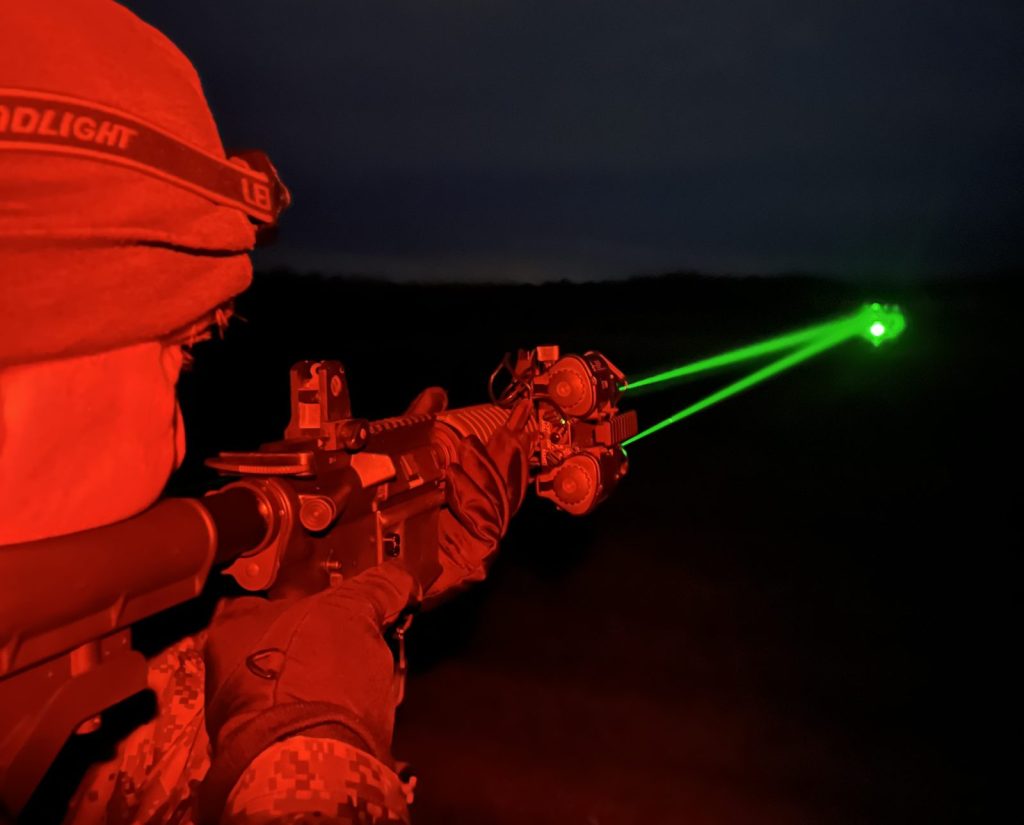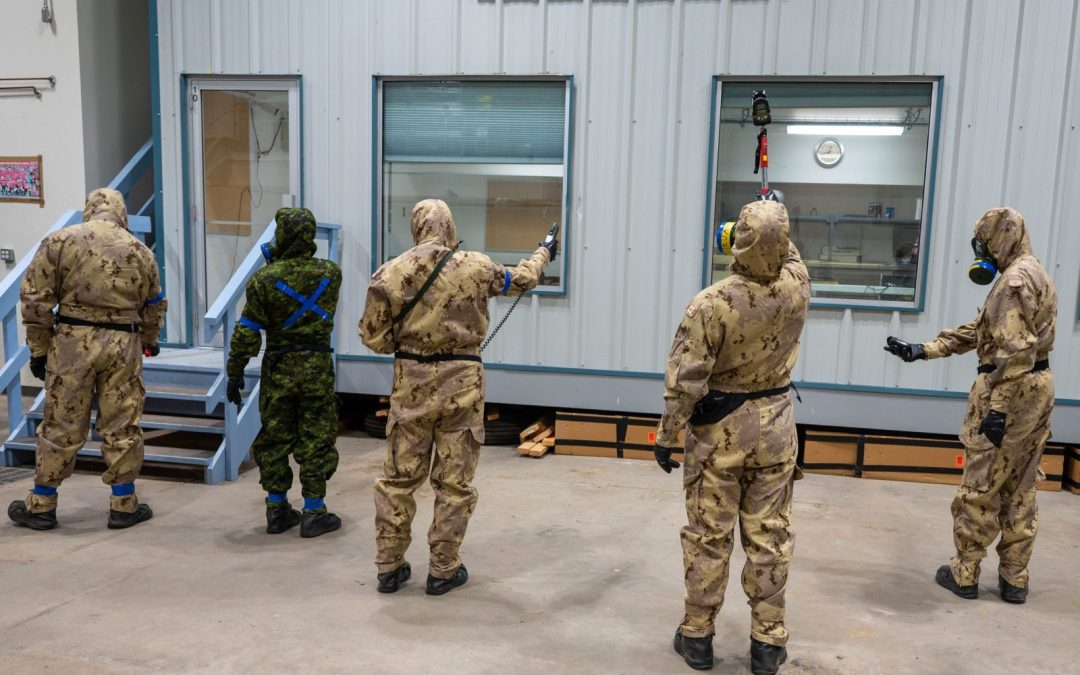by Ian Coutts
“We don’t want someone buying a new rucksack who hasn’t marched with a rucksack in the last 20 years.”
Colonel Walter Taylor is trying to explain the kind of graduate that the Army’s Applied Military Science Department School, at the Royal Military College in Kingston, hopes to produce.
Each year, the school offers a course intended to give captains, majors, and senior non-commissioned officers an understanding of a broad range of technical subjects that can be grouped under the heading “applied military science” — from weapons to vehicles to communications equipment.
Useful skills, undoubtedly. But there’s a perception out there that the 11-month course, which typically takes in between 24 and 30 students — roughly two-thirds captains and majors and one third warrant officers and master warrant officers — is a one-way ticket to a career of eternal procurement. And that’s an idea Taylor wants to quash.
“What we want to see is a career progression model,” he says, “where somebody goes into force development [evaluating and procuring the rucksack] and goes back into the field force [wearing the rucksack].”
It is not “a dead-end street,” says Taylor. “It’s quite the opposite. It opens a number of doors for graduates.”
And these days, when technological change is coming fast and furious, the knowledge that these graduates provide is needed more than ever.
Officially, the training that the Centre for Applied Military Science provides is nominally two separate courses: the Army Technical Staff Officer (ATSO) and the Army Technical Warrant Officer (ATWO). But in practice, both follow an identical curriculum that sees the students taking the course together.
“The main differentiation is that, depending on their academic background, they may be eligible to register in the RMC Masters of Business Administration Program as well,” says Taylor.

Capt Herrmann guides an uncrewed ground vehicle (UGV) using hand signals on the range at DRDC Suffield. Photo: Capt Alan Li
Students take 18 courses that cover the technical aspects of running a modern army: military communications, military information systems, logistics engineering and project management, and other topics. As well, working alone or in twos, students must undertake a project of their own choice, which they present at the end of the course. These range widely in focus.
One recent project involved the compatibility of a vehicle and a trailer hitch that required extensive field testing “and figuring out a very practical solution to a real-world problem,” says Taylor. At the opposite end of the spectrum, they have had students “looking out 20 years at what technologies could be coming online.”
Given the program’s technical nature, candidates with a strong background in science, technology, engineering, and mathematics (STEM) are preferred. But that should not dissuade others from applying. “Every year usually more than half of our students don’t have a STEM background,” he says.
Working with that, the program kicks off with “a basic package on math, physics, chemistry.” But the goal is to produce generalists. “We sort of go an inch deep and a mile wide,” he explains. Even with a strong STEM background, no student could hope to become an expert in every separate subject, or even in one, for that matter. But by the end, they’ll know enough to be able to discuss the topic with an engineer who is an expert, or what questions to ask when they’re meeting with someone from industry.
A key challenge of the program is keeping the curriculum current with the rapid and widespread changes of technology. Looking at a tank 50 years ago, says Taylor, “any kid growing up in Canada might have a pretty good idea of how a drivetrain or internal combustion engine works.” And that would have been immediately applicable in the military.
“But now there’s a computer in every vehicle — multiple computers, multiple sensors, multiple optical systems, fire control systems that are maybe less than intuitive and require more specialized training.”

A student fires a Visual Warning Technology System as part of day and night trials using non-lethal weapons while on the Army Trials and Evaluations Officer qualification course. Photo: Capt Tanner Trepanier
There’s always a balancing act, he says. “I use the analogy of a conveyor belt. As a new technology goes on the front end of the conveyor belt, another one has to drop off the back end” to keep the course the same length.
Taylor cites their vehicles course as an example. Currently, it’s mostly the nuts and bolts of internal combustion engines, with an overview of electric technologies. “But as the years progress, we’re constantly taking a bit less depth into the internal combustion engines and a bit more depth into electrical,” or hydrogen-powered, or other technologies.
Real-world experience plays a role, too. “What we don’t want is to just go off and do what we think is important,” he says. “We have a very close relationship with the Canadian Army Land Warfare Centre, and we are always looking at lessons learned. We want to make sure that our graduates meet the needs of our stakeholders and the people who will employ them.”
Graduates can find themselves working (but not forever!) in both the procurement and the lifecycle management of equipment and technology, at the Director of Land Requirements and for the Assistant Deputy Minister (Materiel) branch, or in a range of different jobs across the Army.
“The Corps schools — the infantry, armour, artillery, and so on — all have a technical adjutant who requires this course. We’ve also recently established a technical liaison officer in Task Force Latvia, to study how the Army’s equipment integrates with our NATO partners.”
Taylor also emphasizes that for their graduates, the learning doesn’t stop when they leave. “This course is the beginning,” he says. “Even at graduation, we tell them that this course is just the beginning of a lifelong learning journey.”

